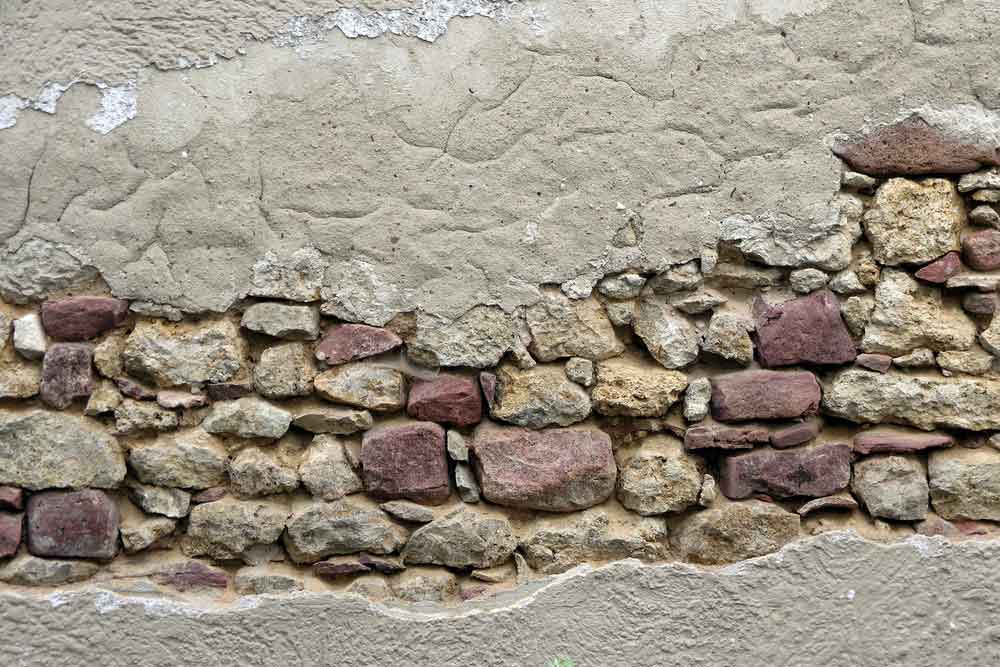In the vast world of geology and construction, stones play a pivotal role. Not only do they add aesthetic beauty to your surroundings, but they also serve functional purposes in structures. Over time, these stones face wear and tear, demanding expert repair to regain their original allure. Knowing different types of stones and how to repair them is the key to maintaining their magnificence.
Quartz: Beauty and Strength Combined
Quartz, a naturally occurring mineral, is known for its hard nature and captivating beauty. This makes it a popular choice for countertops, flooring, and even jewelry. Its crystalline structure gives it a unique shine and makes it available in various colors and forms.
One of the standout qualities of quartz is its durability. It’s more complicated than many other natural stones, making it less prone to scratches or damage. However, this doesn’t make it immune to wear. Over time, with constant use and exposure, even quartz can show signs of aging.
Repairing quartz requires a gentle yet effective approach. Due to its non-porous nature, it doesn’t easily stain, but strong chemicals can damage its surface. So, if you’re cleaning or trying to remove a stain, it’s crucial to use stone-friendly products. For scratches or minor damages, professionals often use diamond sanding pads to buff out imperfections. They work the stone carefully, ensuring the finish remains consistent across the surface.
If a piece of quartz stone has cracks or is broken, the repair becomes more complicated. Professionals might use clear resins to bind pieces together, ensuring the repair is nearly invisible to the naked eye.
Another aspect to consider for quartz repair is color matching. If you’re replacing a section of your quartz countertop or flooring, ensure the new piece matches the rest of the area. Quartz comes in various shades and patterns, and getting a mismatched piece can stand out. So, always keep a sample of your stone or take clear pictures when shopping for replacements.
Granite: A Timeless Elegance with Robustness
Granite, with its granular appearance and the spectrum of colors it offers, has been a favorite choice for millennia. From grand monuments to contemporary kitchen countertops, its application is widespread, resonating with beauty and strength. This igneous rock, born from the cooling of molten lava, brings a touch of nature’s magnificence to our built environment.
Granite is lauded not just for its visual appeal but also for its resilience. It’s one of the hardest natural stones, making it resistant to scratches and able to withstand high temperatures. Its porous nature, however, makes it susceptible to stains, especially if it’s not sealed correctly.
When it comes to the repair of granite, expertise is crucial. For regular maintenance, a simple cleaning with mild soap and water is often enough. However, for stains, a poultice made of baking soda and water can be applied. It’s vital to avoid acidic or abrasive cleaners, as they can etch or dull the stone’s surface.
Scratches or chips in granite can be addressed with the help of professional-grade polishing kits. These kits typically contain various grits of sandpaper and polishing compounds explicitly designed for stone surfaces. The process involves sanding down the affected area and then polishing it to restore its original shine.
Deep cracks or major damages might demand a more extensive repair approach. Epoxy resins, color-matched to the granite, can fill and bind broken pieces. A professional’s touch is essential, ensuring the resin blends seamlessly with the stone, leaving no discernible repair marks.
One pivotal aspect of granite care is sealing. Given its porous nature, sealing granite can protect it from stains and prolong its life. Depending on the usage and location, granite might need resealing every few years.
Marble (Calcite): The Epitome of Sophistication and Delicacy
Marble, characterized by its distinctive veins and swirls, has long been associated with luxury and sophistication. This metamorphic stone, primarily composed of calcite, originates from limestone that undergoes intense heat and pressure within the Earth. Its luminous, polished finish has graced palaces, temples, and modern homes, a testament to elegance and timelessness.
Despite its reputation for luxury, marble is somewhat softer and more porous than other natural stones like granite. This makes it more vulnerable to scratches, etching, and staining. The presence of calcite means it’s susceptible to acids, which can easily cause dull spots or etches.
For marble maintenance, gentle care is the mantra. Regular cleaning with a soft cloth and pH-neutral soap can help maintain its shine. It’s wise to avoid vinegar or lemon-based cleaners or any other acidic substances, as they can damage the stone’s surface. For any spill, especially acidic or oil-based, prompt blotting is essential to prevent staining.
If the marble surface does get scratched or etched, a polishing powder designed for marble can be used to restore its shine. It’s important to follow the product’s instructions meticulously, using gentle, circular motions. For deeper scratches or chips, seeking help from a professional is often the best course of action. They can use specialized tools and techniques to smooth out the imperfections and restore the stone’s original luster.
Stains on marble, especially from organic materials like coffee or red wine, can be tackled using a poultice. It’s a mixture of a white absorbent material and a cleaning agent, which, when applied, draws out the stain from the stone. However, patience is key, as some stains might require multiple applications or longer durations to disappear completely.
A significant step in preserving the beauty of marble is sealing. Given its porosity, a good quality sealant can act as a protective barrier against potential stains, making routine cleaning easier and enhancing the stone’s durability. Depending on usage and location, marble may need resealing periodically.
Soapstone: A Blend of Durability and Warmth
Soapstone, as the name suggests, has a tactile softness similar to a bar of soap thanks to its high talc content. This dense, metamorphic rock has been utilized for thousands of years, ranging from intricate carvings to countertops and stoves in modern homes. Its subtle, greyish-to-greenish tones and natural matte finish can add a touch of understated elegance and warmth to any setting.
One of the noteworthy attributes of soapstone is its inherent thermal properties. It can retain heat effectively and release slowly, making it a favored material for fireplace surrounds and stovetops. So, if you have a soapstone hearth or wood stove, you’ll experience the gentle, prolonged warmth it provides even after the fire has burned out.
While soapstone is softer than granite or marble, it boasts an impressive resistance to acids and bases. This means you don’t have to worry about lemon juice, wine, or other acidic substances leaving etch marks or stains on your soapstone countertop. This resistance, combined with its non-porous nature, makes soapstone maintenance relatively hassle-free.
For daily cleaning, a simple wipe-down with a damp cloth suffices. Since soapstone is non-porous, it doesn’t need regular sealing like granite or marble. However, many homeowners opt to apply mineral oil to their soapstone surfaces. This isn’t for protection but to darken the stone and enrich its color, making its unique veining more prominent. Over time, with repeated oiling, the stone will achieve a deeper, more lustrous patina.
One common concern with soapstone is its susceptibility to scratches and nicks due to its softer nature. But the beauty of this material lies in its ability to be refreshed easily. Light scratches can be buffed away using fine sandpaper, restoring the surface to its smoothness. And if a more significant dent or chip occurs, a professional can often mend it seamlessly, given the stone’s uniformity.
Travertine: Timeless Beauty with a Hint of History
Travertine, often mistaken for marble or limestone, is, in fact, a type of sedimentary rock formed by the precipitation of calcium carbonate in hot springs or limestone caves. Its unique origin story imbues it with several characteristic features that have made it a favorite among homeowners and architects for centuries. When you see the Roman Colosseum or the Sacred House in Turkey’s ancient city of Hierapolis, you’re witnessing the grandeur and resilience of travertine.
One of the standout features of travertine is its distinctive, porous surface filled with tiny, irregular holes. These holes are created by carbon dioxide bubbles trapped during the stone’s formation. This porous nature gives travertine its iconic textured appearance, but it also requires some care when used in homes. To prevent staining and wear, the stone is often filled and sealed, especially when used for countertops or flooring.
Travertine is available in a spectrum of earthen shades, from the softest ivories to deep, warm browns. This versatility in hue stems from the various impurities present during the stone’s formation. Iron, for instance, can lend a reddish tint, while other minerals might contribute to richer browns or golds. Such variations mean that each travertine piece is unique, bringing individual character to projects.
In terms of durability, while travertine is softer than granite or quartz, it still holds its own quite well. However, its softer nature means it can be prone to scratches or etching, especially in high-traffic areas. It’s wise to avoid using acidic cleaners, as these can damage the stone. Warm water and a soft cloth or sponge are often all needed for daily cleaning.
For those looking to impart a historical, Mediterranean feel to their spaces, travertine is an excellent choice for floors, backsplashes, and even outdoor patios. When used outdoors, its natural rough texture offers an added advantage, providing slip resistance.
Limestone: The Soft-hued Classic with a Storied Past
Limestone is not just a stone; it’s a testament to the Earth’s rich history, having been formed over millions of years from the shells and skeletal fragments of marine organisms. Its vast presence in historic monuments and buildings across the globe, from the Pyramids in Egypt to the medieval European cathedrals, underscores its long-standing relationship with humanity.
Predominantly composed of calcium carbonate, limestone showcases a spectrum of soft, neutral colors. These hues, often from whites and creams to light grays or tans, bring a warm and natural feel to any space. The subtle grains and fossil patterns on the stone’s surface add to its unique character, revealing hints of its marine origin.
While limestone is undoubtedly beautiful, its practical applications come with some considerations. It’s softer and more porous than some of its stone counterparts. This means that while it can add elegance to a home as a countertop or a floor, it demands some care. A spill of lemon juice or vinegar can etch its surface, and it can easily absorb stains if not sealed properly. Therefore, homeowners who opt for limestone features should be prepared to regularly seal the stone and approach its cleaning with gentle, non-acidic products.
Architecturally, limestone has been a material of choice not only for its aesthetic appeal but also for its workability. Masons have long valued the stone’s ease of cutting and shaping, making it a favorite for intricate architectural details. Beyond interiors, it’s commonly seen in facades, walls, and landscaping, where its soft color complements natural surroundings.
Limestone’s enduring charm lies in its elegance and natural, earthy feel. It brings warmth to modern designs and aligns perfectly with traditional aesthetics. Though it asks for a bit of tender loving care, the beauty and ambiance it offers are more than worth the effort. The charm of limestone, rooted in the annals of time, can be a remarkable addition to any space, telling tales of ancient seas and civilizations past.
Slate: The Rugged Beauty with Strength to Match
Slate, with its unmistakable layered appearance and versatile range of colors, has been a beloved material for countless generations. Originating from clay or volcanic ash under low-grade metamorphism, slate boasts a rich legacy, from its use as a traditional writing tool to its application as a durable roofing material.
What immediately stands out about slate is its striking aesthetics. The stone naturally splits into flat pieces, making it a popular choice for flooring and roofing tiles. Its colors span a vast spectrum, from earthy grays and greens to deep purples and vibrant blues. This variance in color results from the various mineral impurities present during its formation.
Aside from its captivating looks, the slate’s true strength lies in its durability. While it’s a relatively fine-grained rock, it’s impressively tough. This characteristic has earned it a prime spot in home exteriors. Slate roofs, for instance, are renowned for their long lifespan, often enduring decades with minimal maintenance. The natural resistance of slate to both fire and water further enhances its appeal as a roofing solution.
However, not all slate is created equal. Depending on where it’s sourced from, the quality and attributes of the slate can differ. For example, while slate from some regions may be highly resistant to water, others might be slightly more permeable. These nuances make it crucial to source slate from reputable suppliers, especially for applications where water resistance is paramount.
In interior design, slate brings a touch of nature indoors. Its textured, riven surface offers a tactile quality, adding depth and dimension to spaces. From kitchen backsplashes to bathroom floors, the slate application infuses character and a hint of ruggedness.
Moreover, slate’s natural heat resistance makes it an excellent choice for kitchen countertops, especially around stovetops. And for those who appreciate an eco-friendly touch, slate is a sustainable choice, being a natural product that requires minimal processing.
Onyx/Calcite: The Lustrous Elegance with Versatile Applications
The world of natural stones is filled with marvels, and onyx, a type of calcite, is undoubtedly one of its shining stars. Known for its translucent quality and mesmerizing patterns, onyx is often synonymous with luxury and opulence. Yet, beyond its aesthetic allure, onyx offers a fascinating journey through its formation and varied uses.
Onyx is formed from the slow precipitation of cold spring water or dripping cave formations, resulting in the beautiful banding patterns that the stone is renowned for. While many people might associate onyx with its classic deep black or white hues, the reality is that it can be found in a vast range of colors, including greens, yellows, and browns, depending on the mineral impurities present during its formation.
This captivating stone’s beauty is amplified when light passes through it. Because of its translucent nature, onyx is often backlit in various architectural and design applications to showcase its true splendor. Picture a backlit onyx countertop or wall panel glowing softly, creating an ambiance that’s both sophisticated and inviting.
Beyond its application in luxury interiors, onyx has historical significance as well. The ancient civilizations, including the Greeks and Romans, held onyx in high regard. They used it to create intricate carvings and jewelry, attributing various mystical properties to the stone.
Yet, as enchanting as onyx is, it’s essential to understand its nature. Being a form of calcite, it’s relatively softer compared to stones like granite or quartz. This means that onyx requires a gentle touch and care. It’s susceptible to acids and can easily be stained or etched. Therefore, while it’s a popular choice for decorative applications, there might be better fits for high-traffic areas or places exposed to strong chemicals.
However, with the right sealants and periodic maintenance, onyx can retain its beauty for a long time. Care should be taken to promptly wipe up any spills, especially acidic substances like citrus juices or vinegar, to prevent potential damage.
In the hands of skilled artisans and craftsmen, onyx transforms into works of art, whether it’s a piece of jewelry, a decorative vase, or an entire wall panel. Its versatility, combined with its inherent beauty, makes it a sought-after choice for those looking to add an element of luxury and elegance to spaces.
Reviving the Natural Splendor with Stone Restoration
Every natural stone, from the translucent allure of onyx to the robust appeal of granite, carries a tale of Earth’s marvelous chronicles. Over time, these stones might lose their glow, becoming victims of wear, stains, or scratches. This is where the magic of stone restoration comes into play. Professional stone restoration services, like those offered at Premier Building Restoration, breathe life back into these valuable assets, reinstating their original charm. Whether it’s a cherished onyx countertop that’s lost its sheen or a historic limestone structure showing the ravages of time, experts in this field use specialized techniques and tools to ensure that these stones are not only restored but also protected for the future.










